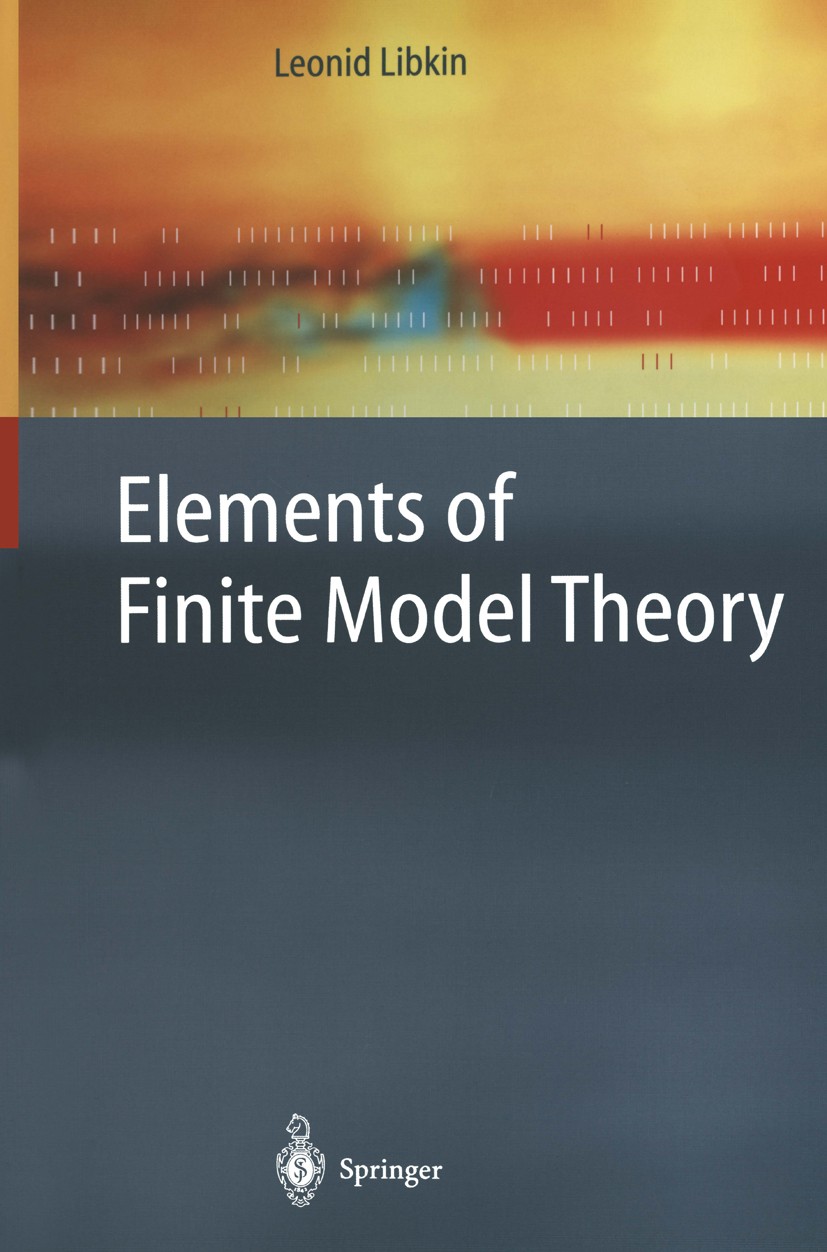| 书目名称 | Elements of Finite Model Theory | | 编辑 | Leonid Libkin | | 视频video | http://file.papertrans.cn/308/307589/307589.mp4 | | 概述 | Suitable for both a one-term graduate course, and for self-study, as well as reference.Includes supplementary material: | | 丛书名称 | Texts in Theoretical Computer Science. An EATCS Series | | 图书封面 |  | | 描述 | Finite model theory is an area of mathematical logic that grew out of computer science applications. The main sources of motivational examples for finite model theory are found in database theory, computational complexity, and formal languages, although in recent years connections with other areas, such as formal methods and verification, and artificial intelligence, have been discovered. The birth of finite model theory is often identified with Trakhtenbrot‘s result from 1950 stating that validity over finite models is not recursively enumerable; in other words, completeness fails over finite models. The tech nique of the proof, based on encoding Turing machine computations as finite structures, was reused by Fagin almost a quarter century later to prove his cel ebrated result that put the equality sign between the class NP and existential second-order logic, thereby providing a machine-independent characterization of an important complexity class. In 1982, Immerman and Vardi showed that over ordered structures, a fixed point extension of first-order logic captures the complexity class PTIME of polynomial time computable propertiE~s. Shortly thereafter, logical characterizations | | 出版日期 | Textbook 2004 | | 关键词 | Automat; Variable; automata; complexity; complexity theory; formal language; logic; model theory; algorithm | | 版次 | 1 | | doi | https://doi.org/10.1007/978-3-662-07003-1 | | isbn_softcover | 978-3-642-05948-3 | | isbn_ebook | 978-3-662-07003-1Series ISSN 1862-4499 Series E-ISSN 1862-4502 | | issn_series | 1862-4499 | | copyright | Springer-Verlag Berlin Heidelberg 2004 |
The information of publication is updating

|
|
 |Archiver|手机版|小黑屋|
派博传思国际
( 京公网安备110108008328)
GMT+8, 2025-12-25 09:11
|Archiver|手机版|小黑屋|
派博传思国际
( 京公网安备110108008328)
GMT+8, 2025-12-25 09:11


